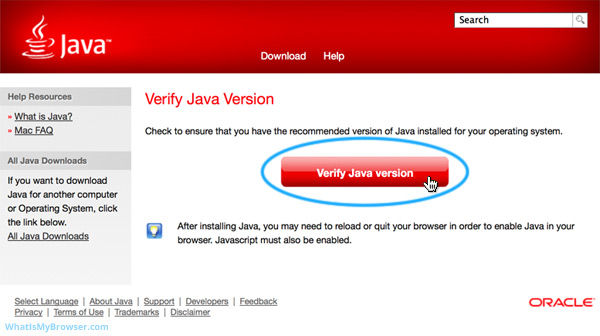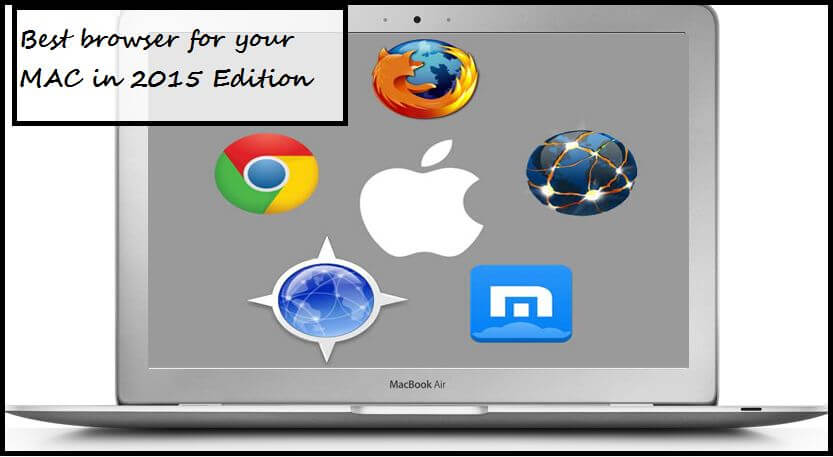

- JAVA BROWSER FOR MAC INSTALL
- JAVA BROWSER FOR MAC UPDATE
- JAVA BROWSER FOR MAC PATCH
- JAVA BROWSER FOR MAC CODE
JAVA BROWSER FOR MAC UPDATE
Oracle has published a detailed Risk Matrix, if you aren’t convinced to update already.įor further information, here are some useful links, both general and specific: The lower the access complexity, the more likely it is that a working exploit can be found and used.
JAVA BROWSER FOR MAC CODE
These latest Java updates fix 30 security holes in total all the holes but one potentially allow remote code execution and 23 of them are categorised as having what Oracle calls an access complexity of “low”. The question you’ll want answered now is, “Should I get the updates right away, or wait?” (Don’t forget that if you’re an OS X user, you may need to update from both Apple and Oracle.) (You can’t get an Oracle Java runtime to match the Apple one – Oracle doesn’t build a 1.6.0-flavoured Java for OS X because that’s seen as Apple’s job.) This leaves you with twice as much Java on your Mac: Apple’s latest version of Java SE 6, and Oracle’s latest version of Java SE 7.
JAVA BROWSER FOR MAC INSTALL
The only downside is that to acquire the needed applet plugin, you have to install Oracle’s Java runtime in parallel with Apple’s Java. You can then choose whether to install the missing plugin or to learn to live without it. You’ll soon find out if you really need Java in your browser, because Apple adds a placeholder plugin that fills any applet window with a “Missing Plug-in” warning and a download button.

That may sound like a bug, but for most users, it’s a feature. So, after you apply the latest OS X Java update – which you only need if you have already chosen to install Java – you will no longer be able to run applets in your browser Then, Apple issued an update that would tell your browser to turn off Java if you hadn’t used it for a while, thus reducing your needless exposure to hostile Java code on the web.Īnd in its latest security update, Apple has been even more aggressive.Ĭupertino’s coders not only bumped up their Java version to Oracle’s latest release of Java SE 6 (1.6.0_37), but also ripped out the browser plugin component entirely. Lion and Mountain Lion (10.8) include a program stub ( /usr/bin/java) that offers to fetch and install Java if ever you try to use it, but it’s not installed by default.

It seems as though Apple has been listening.įirst, it stopped shipping OS X with Java pre-installed when OS X Lion (10.7) came out. Keeping Java out of your browser removes the risk of hostile applets – special stripped-down Java programs embedded into web pages. Oracle updated Java on Tuesday 16 October 2012, as expected Apple followed suit a day later.įor some time, Naked Security’s advice has been to get rid of Java altogether if you don’t need it, or to ban it from your browser if you use Java only for running pre-installed applications. This month, things have been calmer and more predictable. The crooks used this window (no pun intended) to build a giant-sized botnet of Macs infected with a Trojan known as OSX/Flshplyr-B.
JAVA BROWSER FOR MAC PATCH
Once Oracle has patched Java, Apple then sucks the changes into its Java code tree and issues its own updates, but you can never be quite sure how long that’s going to take.Īpple infamously took until April 2012 to push out a patch that had been available to everyone else since February, thus leaving a lengthy window of opportunity for malware authors. For most products, the patches come four times a year:įor Oracle Java SE, the patches come three times a year:įixes deemed too critical to wait for the next CPU are issued ad hoc as Security Alerts. For Your Diary: Oracle Critical Patch UpdatesĬritical Patch Updates (CPUs) are collections of security fixes, released on the Tuesday closest to the 17th day of the month.


 0 kommentar(er)
0 kommentar(er)
